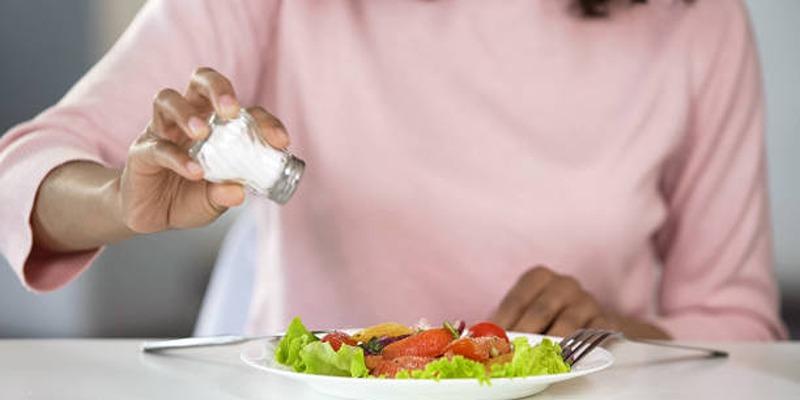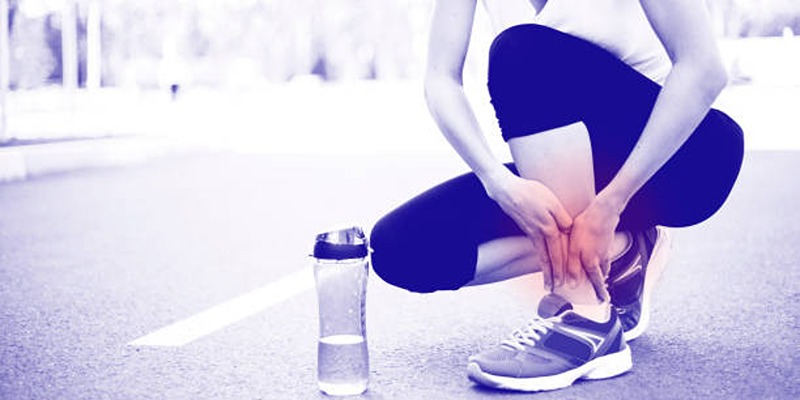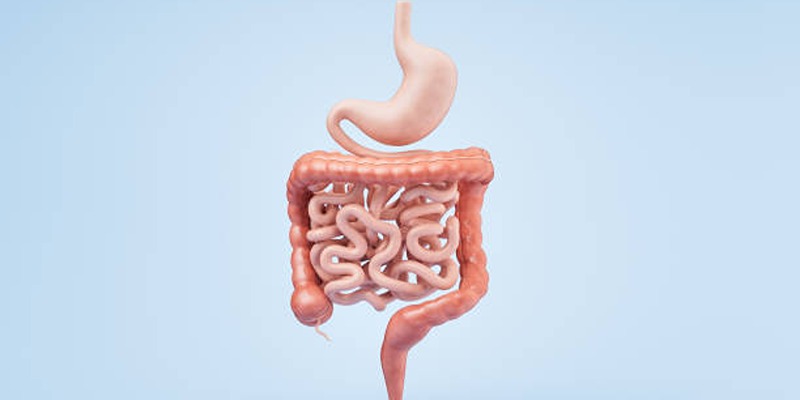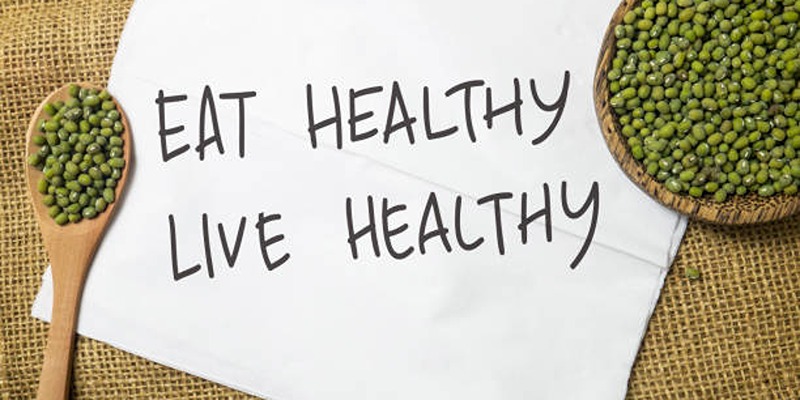Salt Overload: Uncovering the Hidden Danger on Your Plate
Advertisement
Modern diets harbor an unseen danger from too much salt which people generally fail to recognize as hazardous. Staying healthy requires the essential nutrient salt to help maintain fluid balance and operate nerves and muscles yet consuming overly large amounts of salt has negative health implications. Adults nowadays get too much sodium because manufacturers put it in processed foods and restaurants as well as non-processed snacks. An excessive intake of salt substances creates critical health hazards that lead to increased blood pressure and heart disease and stroke.
The Importance of Salt in the Body:
Salt, or sodium chloride, is essential for maintaining key bodily functions. Sodium, a primary component of salt, plays a crucial role in regulating fluid balance, supporting nerve signals, and enabling muscle contractions. Without enough sodium, these critical processes would falter.
The issue, however, lies in overconsumption. The World Health Organization (WHO) advises adults to limit their salt intake to less than 5 grams per day—roughly the amount in a teaspoon. Yet, many people unknowingly consume far more than this recommended amount, putting their health at risk.
Hidden Sources of Salt:
Managing salt intake can be challenging, especially when so much of it comes from unexpected places. Even if we consciously cut back on added salt at home, a significant portion of our daily sodium consumption comes from hidden sources like these:
- Processed Foods: Canned soups, frozen dinners, and instant noodles are often packed with salt to boost flavor and prolong shelf life.
- Snack Foods: Favorites like chips, pretzels, and crackers are well-known for their high sodium levels.
- Condiments and Sauces: Everyday staples such as ketchup, soy sauce, salad dressings, and even pasta sauces can contain startling amounts of salt.
- Bread and Baked Goods: Surprisingly, many bread products, including bagels and muffins, are sneaky contributors to your daily sodium intake.
- Restaurant and Takeout Meals: Dining out often means consuming meals with excessive salt, as chefs tend to use it generously to enhance flavor.
Health Risks of Excessive Salt Consumption:

Consuming too much salt can seriously impact your health. Below are the most critical dangers to be aware of:
1. High Blood Pressure
Excess sodium in your diet forces your body to retain water, increasing the volume of blood flowing through your blood vessels. This added pressure strains vessel walls, making your heart work harder to pump blood.
2. Heart Disease and Stroke
Chronic high blood pressure caused by excessive salt intake puts relentless stress on the heart and damages arteries. Over time, these arteries can narrow or harden, significantly raising the likelihood of heart attacks and strokes—two of the leading causes of death globally. Cutting back on salt can alleviate stress on your cardiovascular system and is one of the most effective ways to reduce these risks.
3. Kidney Damage
Your kidneys play a crucial role in filtering excess sodium from your bloodstream. However, a high-salt diet forces them to work overtime, which can impair their function over time. This strain can lead to fluid retention, chronic kidney disease, and, in severe cases, kidney failure requiring dialysis or a transplant.
4. Osteoporosis
Excessive salt intake can cause your body to lose calcium through urine, weakening bones over time. This increases the risk of osteoporosis, especially for older adults and postmenopausal women, making bones more fragile and prone to fractures. Maintaining a low-sodium diet can help preserve bone health and reduce the risk of long-term complications.
5. Stomach Cancer
Research suggests that high salt consumption can damage the stomach lining, creating an environment favorable for harmful bacteria like Helicobacter pylori. This increases the risk of stomach inflammation, ulcers, and, in severe cases, stomach cancer. While more studies are needed to fully understand the correlation, experts recommend limiting salt intake as a precaution, especially for those with a family history of gastrointestinal issues.
How to Reduce Your Salt Intake?
The good news? Cutting back on salt is entirely within your control. Here are some practical and effective tips to help you make healthier choices:
1. Check Food Labels
Always read the nutrition labels when shopping. Look for products labeled "low sodium" or "no added salt." Pay close attention to serving sizes, as sodium values often apply to a single serving, not the entire package.
2. Cook at Home
Home cooking gives you full control over the amount of salt in your meals. Use fresh, whole ingredients and experiment with herbs, spices, garlic, and citrus juice to enhance flavor naturally—no salt needed.
3. Cut Back on Processed Foods
Processed and packaged foods are often loaded with hidden sodium. Instead, focus on whole, unprocessed options like fresh fruits, vegetables, lean proteins, and whole grains. These are not only healthier but also naturally low in sodium.
4. Opt for Low-Sodium Alternatives
Many pantry staples, such as broths, canned beans, and sauces, are available in low-sodium versions. Swap these in for regular options to significantly reduce your salt intake without sacrificing convenience.
5. Be Cautious When Dining Out
Restaurant meals are often high in salt, but you can take steps to reduce your intake. Ask for your dishes to be prepared with less salt, skip the salt shaker at the table, and watch out for sodium-packed condiments like soy sauce and salad dressings.
6. Reduce Salt Gradually
If you’re used to a salty diet, your taste buds may need time to adapt. Gradually cut back the amount of salt you use in cooking and at the table. Over time, your palate will adjust, and you’ll find yourself craving salt less and less.
Public Health Efforts to Tackle Salt Overload:

Reducing excessive salt consumption requires more than individual action—it demands a united, collective effort. Around the world, governments and health organizations are implementing impactful strategies to address this issue on a broader scale, including:
- Establishing Salt Reduction Targets: Many countries have introduced clear guidelines to limit the maximum salt content in processed foods.
- Raising Public Awareness: Campaigns are educating people about the health risks of high salt intake and empowering them to make smarter dietary choices.
- Partnering with the Food Industry: Manufacturers are being encouraged to reformulate their products to lower sodium levels without compromising taste.
- Introducing Menu Labeling: Restaurants are being required to display nutritional information, including sodium content, directly on menus to promote informed decisions.
Conclusion:
Excessive salt consumption is a hidden health hazard with serious consequences. By recognizing where salt sneaks into our diets and taking intentional steps to reduce it, we can safeguard our well-being. Simple actions like reading food labels, cooking more meals at home, and supporting public health initiatives can make a meaningful difference. Small changes can yield significant benefits.
On this page
The Importance of Salt in the Body: Hidden Sources of Salt: Health Risks of Excessive Salt Consumption: 1. High Blood Pressure 2. Heart Disease and Stroke 3. Kidney Damage 4. Osteoporosis 5. Stomach Cancer How to Reduce Your Salt Intake? 1. Check Food Labels 2. Cook at Home 3. Cut Back on Processed Foods 4. Opt for Low-Sodium Alternatives 5. Be Cautious When Dining Out 6. Reduce Salt Gradually Public Health Efforts to Tackle Salt Overload: Conclusion:Advertisement












